Exploring 12 Amazing Facts About Chinese Food Culture
Chinese food culture is rich and diverse, woven with centuries of tradition, regional differences, and culinary techniques. Here are twelve amazing facts that highlight the uniqueness of this fascinating culture.
1. Regional Diversity
China is vast, and its food varies from region to region. From the spicy dishes of Sichuan to the sweeter flavors of Guangdong, the country offers a feast for every palate. Each area boasts its own specialties, making Chinese cuisine incredibly diverse and enjoyable.
2. Harmony of Ingredients
In Chinese cooking, balance is key. Dishes are often created with the goal of achieving harmony between flavors, colors, and textures. This approach reflects the philosophy of Yin and Yang, where contrasting elements, like hot and cold flavors or soft and crunchy textures, complement each other.
3. Symbolic Foods
Certain foods in Chinese culture hold special meanings, particularly during festivals and celebrations. For example, dumplings symbolize wealth, while long noodles represent longevity. Knowing these symbols adds depth to the dining experience.
4. The Importance of Rice
For many Chinese families, rice is a staple food that forms the foundation of their daily meals. It is often served at nearly every meal and can be enjoyed in countless ways, whether steamed, fried, or congee (a rice porridge). Rice is not just food; it’s a vital part of life.
5. Tea Culture
China is the birthplace of tea, and its significance goes beyond mere drinking. Tea ceremonies are an integral part of social life and often symbolize hospitality. Various types of Chinese tea, like green, black, and oolong tea, each offer unique flavors and health benefits.
6. Dim Sum Delights
Originally from Cantonese cuisine, dim sum has become a popular tradition across the world. These bite-sized treats range from dumplings to buns and are often enjoyed during breakfast or lunch. Sharing dim sum with friends or family makes it a fun dining experience.
7. Street Food Culture
Street food is an essential aspect of China’s food culture. You’ll find vendors selling everything from skewered meats to steamed buns and bubble tea. Street food is not only delicious but also offers a peek into local life and culture.
8. The Age of Chopsticks
Chopsticks have been used in China for thousands of years and are more than just a utensil; they represent the country’s culture and philosophy. The use of chopsticks requires skill and encourages a mindful approach to eating.
9. The Influence of Buddhism
Chinese food culture has been influenced significantly by Buddhism, particularly in the realm of vegetarianism. Many dishes are created without meat, showcasing the creativity and resourcefulness of cooks using vegetables, tofu, and grains.
10. Festivals and Food
Food plays a central role in Chinese festivals. During the Spring Festival, families prepare lavish meals to celebrate the New Year, which may include fish for surplus and rice balls for reunion. Food not only nourishes the body but also nourishes familial bonds.
11. Health-Conscious Choices
Chinese cuisine often emphasizes fresh ingredients and a balance of nutrients. Many traditional dishes include a variety of vegetables, lean proteins, and grains, promoting a health-conscious lifestyle. Cooking methods like steaming and stir-frying help preserve these nutrients.
12. Culinary Traditions Passed Down
Family recipes are often treasured and passed down through generations. Cooking is seen as an art form in many families, where children learn from their parents. This passing of knowledge helps keep traditions alive and ensures that the flavors of homeland continue.
Exploring Chinese food culture opens up a world of flavors, stories, and experiences. For more in-depth information about this fascinating topic, visit China Highlights or Chowhound’s guide to Chinese food for exciting insights and recipes.
The Influence of Regional Ingredients on Chinese Cuisine
China is a vast country with diverse landscapes, climates, and cultures, and this remarkable variety deeply influences its cuisine. Each region of China boasts unique ingredients, flavors, and cooking styles that reflect its local agriculture, climate, and traditions. Understanding this vibrant tapestry can enhance your appreciation for Chinese food culture.
Regional Diversity in Ingredients
From the spicy Szechuan peppers of the southwest to the fresh seafood of the eastern coastal regions, ingredients vary widely across China. Here’s how regional differences shape Chinese cuisine:
1. Shandong: This northeastern region is famous for its seafood, including fish, shellfish, and seaweed. Ingredients here are often fresh and cooked simply, highlighting their natural flavors.
2. Guangdong (Cantonese): Known for its dim sum and light, flavorful dishes, Guangdong cuisine makes extensive use of fresh herbs, vegetables, and a variety of meats, including chicken and pork. Ingredients are often prepared in a way that preserves their natural essence.
3. Szechuan: If you enjoy bold flavors, then Szechuan province is your go-to. This region is renowned for its use of garlic and chili peppers, along with Szechuan peppercorns. The combination creates a numbing heat that is a hallmark of Szechuan dishes.
4. Jiangsu: This eastern region emphasizes sweetness and delicacy. Dishes often feature river fish and succulent meats, along with local produce such as soybeans, which are turned into sauces and tofu.
5. Yunnan: Known for its mushrooms and herbs, Yunnan cuisine often incorporates wild vegetables and flowers. The region’s unique climatic conditions allow for a rich diversity of ingredient options.
Important Ingredients Across Regions
Below is a table summarizing key ingredients commonly found in various regions of China:
| Region | Main Ingredients | Iconic Dishes |
|---|---|---|
| Shandong | Seafood, garlic, scallions | Sweet and sour carp, Dezhou braised chicken |
| Guangdong | Pork, chicken, fresh seafood | Dim sum, roast duck, barbecue pork |
| Szechuan | Szechuan peppercorns, chili, garlic | Mapo tofu, Kung Pao chicken |
| Jiangsu | Soybeans, river fish, sweet ingredients | Sweet and sour mandarin fish, lion’s head meatballs |
| Yunnan | Mushrooms, fresh herbs, flowers | Crossing-the-bridge noodles, Yunnan rice noodles |
The Role of Local Agriculture
Local agriculture plays a fundamental role in shaping the available ingredients. Regions with fertile land, like the Yangtze River Delta, produce a bounty of rice and vegetables, while areas with a drier climate might focus on grains, legumes, and livestock. This agricultural availability directly impacts what ingredients are used in regional cooking and how dishes are prepared.
Cultural Significance of Ingredients
In Chinese culture, each ingredient has a specific significance. For example, fish is often associated with wealth and surplus due to its pronunciation, which sounds similar to the word for “abundance.” Meanwhile, the use of certain herbs is believed to offer health benefits or even spiritual significance, enhancing the overall experience of enjoying a meal.
Moreover, traditional Buddhist dietary practices influence vegetarian cooking, particularly in regions like Tibet and Yunnan, where meat consumption is lower. This leads to creative uses of local vegetables and grains, contributing to the region’s distinct culinary identity.
Seasonal Influences
Seasonality affects what ingredients are used in Chinese cuisine. Spring ingredients like bamboo shoots and peas are popular, while winter features hearty root vegetables and preserved items. This seasonal approach not only emphasizes freshness but also encourages the use of local products, making each meal a reflection of the time of year.
Ultimately, the influence of regional ingredients on Chinese cuisine is profound and complex. By understanding local practices and the cultural significance of various foods, you can enhance your love for this exquisite culinary art. To dive deeper into regional cooking, you might explore resources like China Sichuan Food or The Woks of Life for authentic recipes and insights.
Chinese food culture is a captivating blend of flavors, textures, and history, inviting you to explore a world of culinary delights shaped by its rich regional diversity.
Traditional Chinese Cooking Techniques and Methods
Chinese cuisine is as diverse as its culture, and traditional cooking techniques play an important role in shaping the flavors and presentation of this beloved cuisine. Beyond just the ingredients, it’s the methods and skills that elevate Chinese cooking to an art form. Here are some fascinating techniques that form the backbone of traditional Chinese cooking.
Stir-Frying
Stir-frying is one of the most well-known Chinese cooking methods. It involves cooking food quickly in a small amount of hot oil while stirring continuously. This technique is perfect for retaining the color, texture, and nutritional value of vegetables. The key tools for stir-frying include:
- Wok: A deep, rounded pan that allows for even heat distribution.
- Spatula: A flat tool used to toss and stir the ingredients.
- High Heat: The cooking temperature is vital, enabling quick cooking without losing moisture.
Steaming
Steaming is a gentle cooking method that preserves food’s natural flavors and nutrients. This method is commonly used for vegetables, seafood, and dumplings. A traditional bamboo steamer is often used, allowing steam to circulate freely. Steaming is advantageous because:
- It requires little to no oil, making dishes healthier.
- Food retains its original taste and color.
Poaching
This technique involves cooking food in simmering water or broth. It’s a preferred method for delicate proteins like fish or chicken. Poaching helps to maintain moisture and tenderness. Here are a few key points about poaching:
- Temperature Control: Keeping the liquid at a gentle simmer is crucial.
- Flavor Infusion: Herbs and spices added to the poaching liquid infuse the food with flavor.
Roasting
Roasting in Chinese cooking is generally done in an oven or over an open flame. This technique enhances the flavors of meats, particularly with recipes like Peking Duck. The following are characteristics of roasting:
- High Heat: This helps to create a crispy exterior while keeping the inside juicy.
- Marinades and Glazes: Various sauces are applied to enhance flavor, like hoisin or soy sauce.
Deep-Frying
Deep-frying involves completely submerging food in hot oil. This technique is widely used for items like spring rolls and crispy chicken. Essential aspects include:
- Oil Temperature: The oil must be hot enough to create a crispy coating without absorbing excess oil.
- Breading: Most items are coated in batter or breadcrumbs for added texture and flavor.
Slow Cooking
Slow cooking is integral in Chinese cooking, especially for stews and braised dishes. Cooked at low temperatures for extended periods, this method enhances the depth of flavors. Important factors include:
- Time: Slow cooking can take several hours, allowing for complete flavor fusion.
- Liquid: Whether broth or sauce, the chosen liquid is key to a flavorful outcome.
Fermenting
Fermentation is a traditional method that has been used for centuries in Chinese cuisine. Foods like soy sauce and pickled vegetables undergo fermentation, resulting in rich flavors that enhance numerous dishes. Benefits of fermentation:
- Unique Flavors: Adds depth and complexity to culinary creations.
- Preservation: Extends the shelf-life of food while enhancing its nutritional value.
Chinese Knife Skills
Mastering knife skills is essential in traditional Chinese cooking. Precise cuts not only affect the cooking time but also enhance the visual appeal and texture of ingredients. Important techniques include:
- Julienne: Thin strips for quick cooking and perfect presentation.
- Chopping: Uniform pieces for even cooking consistency.
To further learn about these methods and dive deeper into authentic Chinese recipes, consider visiting The Spruce Eats and China Family Adventures.
Traditional Chinese cooking methods showcase the rich heritage and culinary mastery of this vibrant culture. Through a combination of techniques and a focus on fresh ingredients, it creates a beautiful blend of flavors, textures, and aromatic experiences. Each method tells a story of generations passed, reflecting the diversity and artistry that is Chinese cuisine.
The Significance of Tea in Chinese Food Culture
Tea plays a vital role in Chinese food culture, influencing lifestyle, social interactions, and culinary traditions. Its importance goes beyond mere refreshment, reflecting centuries of cultural significance and practices deeply ingrained in the daily lives of the Chinese people. Here are some compelling insights into the significance of tea within this rich culture.
The Historical Roots of Tea in China
Tea cultivation and consumption date back to ancient times in China, with legends attributing its discovery to Emperor Shen Nong around 2737 BC. Initially valued for its medicinal properties, tea evolved into a staple drink that became an essential part of social gatherings and rituals. Today, it embodies over 5,000 years of history that intertwines with Chinese philosophy and culture.
Types of Tea and Their Cultural Symbolism
China is home to a variety of teas, each with distinct flavors, health benefits, and cultural meanings. Here are the primary categories:
- Green Tea: Known for its fresh and grassy flavor, green tea symbolizes health and longevity.
- Black Tea: Fully oxidized, black tea is robust and represents vitality.
- Oolong Tea: A semi-oxidized variety that boasts complex flavors, oolong tea is often associated with refinement.
- White Tea: One of the least processed types, white tea signifies purity and gentleness.
- Herbal Tea: Not made from traditional tea leaves, herbal teas feature various flowers, spices, and herbs, reflecting personal wellness.
Culinary Pairing with Tea
In Chinese food culture, tea isn’t just a beverage; it is thoughtfully paired with food to enhance flavors and promote digestion. Certain teas are favored with specific dishes. Here’s how:
- Seafood: Typically paired with green tea, which helps cleanse the palate.
- Fatty Meats: Black tea is often enjoyed with rich dishes to cut through the grease.
- Spicy Dishes: Mild oolong tea can balance spiciness, making meals more enjoyable.
Tea as a Social Tradition
In China, offering tea is a sign of respect and hospitality. The tradition of “Gongfu Cha,” or the art of brewing tea, involves intricate rituals that demonstrate care and thoughtfulness. The act of pouring tea from a small pot into cups fosters connections among friends and family. Special occasions often feature tea ceremonies that highlight the beauty of tea culture.
The Health Benefits of Tea
Beyond its cultural significance, tea boasts numerous health benefits. With antioxidants, vitamins, and minerals, tea contributes to overall well-being. Some specific benefits include:
- Boosting Metabolism: Green tea is known to enhance metabolic rates.
- Reducing Stress: Herbal teas, such as chamomile, promote relaxation.
- Improving Heart Health: Regular consumption of black tea can support cardiovascular health.
Each Province, a Unique Tea Culture
Different regions in China have their unique tea practices and preferences, showcasing the diversity of tea culture:
| Region | Type of Tea | Cultural Element |
|---|---|---|
| Fujian | Oolong | Tea Rock Culture |
| Yunnan | Puerh | Ancient Tea Horse Road |
| Zhejiang | Dragon Well | Tea Picking Festivals |
Modern Influence and Global Reach
In contemporary society, tea continues to influence both daily life and global cuisine. Specialized tea houses and modern bubble tea (or Boba) shops are gaining popularity worldwide, making Chinese tea culture more accessible to non-Chinese audiences. This globalization reinforces tea’s adaptability and continued relevance in the culinary landscape.
As a cornerstone of Chinese food culture, tea not only accompanies meals but also nurtures relationships and promotes well-being. Its rich history, diverse types, and cultural rituals ensure that tea will remain a beloved aspect of China’s culinary heritage for generations to come.
For more on the significance of tea in Chinese food culture, you can visit Tea Time or explore traditional tea brewing methods at China Tea Store.
How Festivals Shape the Chinese Culinary Calendar
Festivals play a crucial role in shaping the culinary traditions of China. The diverse array of festivals celebrated throughout the year influences what people eat, how food is prepared, and the cultural significance tied to various dishes. From the lively celebrations of the Lunar New Year to the solemn observances of the Mid-Autumn Festival, each occasion provides a unique glimpse into the rich tapestry of Chinese food culture.
During the Lunar New Year, commonly known as Spring Festival, families gather to prepare and share symbolic foods that represent good fortune and prosperity. Dumplings, for instance, are a staple during this time. They are traditionally shaped like ancient Chinese ingots, symbolizing wealth. The preparation of these dumplings often becomes a family affair, fostering bonds as everyone from grandparents to young children joins in this culinary activity. Moreover, the act of eating fish during the New Year signifies an abundance and a wish for surplus in the coming year, since the Chinese word for fish (鱼) sounds like the word for surplus (余).
The Qingming Festival, also known as Tomb-Sweeping Day, takes a more reflective tone. Families honor their ancestors by preparing a variety of traditional foods. One common dish is the sweet, sticky rice dumpling known as qingtuan. These green pastries are made from glutinous rice and often contain fillings like sweet bean paste. The color green symbolizes the springtime renewal of life, highlighting the connection between food, nature, and the honoring of those who have passed.
The Dragon Boat Festival, celebrated on the fifth day of the fifth lunar month, is marked by the iconic zongzi, or sticky rice dumplings wrapped in bamboo leaves. People eat zongzi to commemorate the death of the poet Qu Yuan, who drowned himself in protest against corruption. These dumplings, filled with yumminess like pork, beans, or egg yolks, are often enjoyed during dragon boat races, which add a communal spirit to the celebration.
Let’s take a look at how different festivals influence food choices:
| Festival | Traditional Foods | Cultural Significance |
|---|---|---|
| Lunar New Year | Dumplings, Fish, Noodles | Wealth, Longevity |
| Qingming Festival | Qingtuan, Jiaozi | Remembering Ancestors |
| Dragon Boat Festival | Zongzi | Commemoration of Qu Yuan |
| Mid-Autumn Festival | Mooncakes | Reunion and Harmony |
The Mid-Autumn Festival, celebrated on the 15th day of the 8th lunar month, marks the harvest season and is characterized by the sharing of mooncakes. These round pastries symbolize completeness and unity, serving as a reminder of the importance of family gatherings. Friends and family often exchange mooncakes and enjoy moon-viewing parties together, reinforcing the connection between food and social bonds.
In addition to the festivals mentioned, the Chinese culinary calendar includes many regional and ethnic celebrations that introduce unique flavors and delicacies. For instance, the Tibetan New Year features traditional barley and dairy dishes, while the Chaozhou New Year has an abundance of various seafood. Each region’s culinary offerings reveal how local ingredients and traditions have shaped their festivals and, by extension, the broader Chinese food culture.
While food is substantial during these celebrations, it also plays a crucial role in rituals and ceremonies. Many believe that meals served at festivals carry spiritual significance. For instance, offering food to ancestors during festivals is a way to nourish and honor them, connecting the spiritual and earthly realms through culinary practices.
To explore more about Chinese food culture and traditions, you can visit the following websites:
- Chinese Food History
- China Highlights: Chinese Food
- Fine Dining Lovers: Exploring China’s Festival Foods
Food is more than just sustenance in Chinese culture; it encapsulates the essence of tradition, family, and history. Festivals not only dictate what is eaten but also foster a sense of community and continuity through shared culinary practices. Whether it’s dumplings during the New Year or mooncakes during the Mid-Autumn Festival, the meals served create lasting memories and reinforce cultural identities. By understanding how festivals shape the culinary calendar, you can appreciate the depth and richness of Chinese food culture even more.
The Role of Food in Chinese Family Gatherings
Food holds a sacred place in Chinese family gatherings, symbolizing unity, prosperity, and harmony. It’s not just about eating; it’s an emotional thread that ties families together. Every meal is an opportunity for connections, filled with traditions and rich meanings. Let’s explore how food culture plays a pivotal role in these gatherings.
Traditionally, feast days and family reunions revolve around meticulously prepared meals, often featuring a variety of dishes that represent abundance. These meals are carefully crafted to cater to the preferences of every family member, fostering a sense of belonging. The act of sharing food is a cornerstone of the experience, creating moments of joy and laughter.
A typical Chinese family meal is abundant and diverse, showcasing vibrant flavors and textures. Here are some common features of food during such gatherings:
- Diverse Dishes: From stir-fried vegetables to braised meats, the array of dishes can be dazzling. Each dish is often cooked with a specific intention, such as fish for abundance or dumplings for wealth.
- Symbolic Foods: Certain foods carry deep-seated symbolism. For example, whole chicken represents family unity, while long noodles are a wish for longevity.
- Shared Dishes: Instead of individual plates, food is typically served family-style. This encourages sharing and collaboration, further strengthening family bonds.
The importance of food extends beyond the meal itself. The preparation process serves as an opportunity for family members to bond. Often, multiple generations come together in the kitchen, sharing techniques and stories passed down through ages. In this environment, skills are not only taught but also celebrated.
On special occasions like Chinese New Year, the importance of food amplifies. The reunion dinner, a significant event, isn’t just about satisfying hunger; it’s about coming together to honor ancestors and pray for good fortune. Specific dishes are prepared with care, embodying family wishes for the coming year.
| Dish | Symbolism |
|---|---|
| Fish | Abundance |
| Dumplings | Wealth |
| Long Noodles | Longevity |
| Sweet Rice Balls | Reunion |
In addition to physical togetherness, food plays a vibrant role in expressing love and care. Cooking special dishes for family conveys thoughtfulness and affection. This demonstrates a unique way of communication, where flavors express feelings that words often cannot.
Gatherings often include good wishes exchanged over the table, highlighting gratitude and connection. In these instances, meals serve as a backdrop for heartfelt conversations, laughter, and sometimes even storytelling from older family members, creating lasting memories.
Cultural delicacies also enhance these gatherings. Each region in China shares its unique flavors and dishes, showcasing the country’s culinary diversity. For instance, a family from Sichuan might present spicy hot pot, while a Hunan family enjoys savory cured meats. This exchange of cuisines can foster an appreciation for heritage, promoting unity among families that come together during these gatherings.
Moreover, the positive impact of food culture extends to building community ties beyond familial bounds. Attending festivals and feasts not only strengthens family connections but also enhances social networks. This collective experience of sharing meals can reinforce a community feeling, showcasing shared values and cultural traditions.
It’s essential to recognize that food is more than just sustenance; it is a conduit for expressing love, heritage, and identity. Understanding the depth of food in Chinese family gatherings opens a window to the culture’s values, where the essence of unity and love can be tasted and felt at every meal.
For more on the rich traditions surrounding Chinese food culture, you can visit Chinese New Year Food or explore Chinatown Connection.
The Evolution of Chinese Cuisine in a Globalized World
The Roots of Chinese Cuisine
Chinese cuisine has a rich history that spans over a thousand years, drawing from various regional ingredients, practices, and traditions. Each cuisine within China is influenced by geography, climate, and the local culture. For example, the use of rice is predominant in southern China, while wheat plays a major role in the north.
The Integration of Foreign Influences
With globalization, Chinese cuisine has not just remained static; it has evolved and integrated foreign influences. During the past few decades, it has absorbed elements from many different cultures, leading to fusion dishes that appeal to global palates. For instance, dishes like Chinese-American General Tso’s Chicken combine traditional Chinese flavors with Western cooking techniques and preferences.
Regional Variations and Popularization
In a globalized world, it’s fascinating to see how various regions of China are represented. Different styles such as Cantonese, Szechuan, and Hunan cuisine are increasingly popular in international dining scenes. Here are some key characteristics of these popular regional cuisines:
- Cantonese Cuisine: Known for its fresh ingredients and delicate flavors, including dim sum and sweet and sour dishes.
- Szechuan Cuisine: Famous for its bold flavors and spice, particularly the use of Szechuan peppercorns.
- Hunan Cuisine: Recognized for its hot and sour flavors, frequently using smoked and cured meats.
Adoption of Health Trends
As people around the world become more health-conscious, traditional Chinese cooking methods, which often emphasize steaming and stir-frying, align well with these trends. Dishes that utilize fresh vegetables, lean meats, and minimal oil are appealing to health-aware consumers. For example, rice noodle salads and steamed dumplings are becoming staples in many health-conscious restaurants.
Chinese Street Food on the Rise
Street food culture is thriving globally, and Chinese street foods are becoming hugely popular. The portable, easy-to-eat nature of items like bao buns, egg waffles, and scallion pancakes makes them a hit in various cities. This adaptability has opened up many opportunities for food stalls and mobile kitchens, allowing more people to experience the flavors of authentic Chinese street food.
Technological Advancements in Cooking
The digital age has also enhanced the popularity of Chinese cuisine. Cooking videos, food blogs, and social media have made it much easier for people to learn how to cook Chinese dishes at home. Online communities have emerged, where enthusiasts can share recipes, cooking tips, and meal variations. This exchange contributes to the continued evolution of Chinese cuisine beyond its traditional confines.
The Future of Chinese Cuisine
Looking ahead, the evolution of Chinese cuisine will likely continue to reflect changing tastes and trends globally. The growing interest in sustainable cooking may encourage chefs to focus on locally-sourced and seasonal ingredients, reinterpreting traditional recipes in innovative ways.
Examples of Globalized Chinese Dishes
| Dish Name | Origin | Key Ingredients | Global Status |
|---|---|---|---|
| General Tso’s Chicken | United States | Chicken, soy sauce, vinegar, sugar | Popular in American Chinese restaurants |
| Kung Pao Chicken | China | Chicken, peanuts, Szechuan peppercorn | Widely known in Westernized menus |
| Chow Mein | China | Noodles, vegetables, meat | Common across worldwide eateries |
Online Resources for More Insights
If you want to dive deeper into the evolution of Chinese cuisine in a globalized world, consider checking out these resources:
Key Takeaway:
Chinese food culture is a rich tapestry woven from history, tradition, and the varied landscapes that span the nation. As we explored 12 amazing facts about this dynamic culture, we uncovered the profound influence of regional ingredients on Chinese cuisine. Each region boasts its own unique foods and flavors, shaped by local agriculture, climate, and cultural practices. For instance, Sichuan is known for its bold spices and numbing heat, while Cantonese cuisine focuses on fresh and delicate flavors. Understanding these regional differences enhances your appreciation for the diversity found in Chinese cooking.
Traditional Chinese cooking techniques further elevate the culinary experience. Methods like stir-frying, steaming, and braising have been perfected over centuries. These techniques not only preserve the natural flavors of the ingredients but also emphasize health and balance, which are central themes in Chinese food philosophy.
Tea is another cornerstone of Chinese food culture, revered for its ability to complement and enhance meals. Serving tea is a traditional gesture of hospitality, imbibing the dining experience with a sense of ritual and connection.
Festivals play an essential role in shaping the Chinese culinary calendar. Food is intertwined with celebrations like the Lunar New Year and the Mid-Autumn Festival, where special dishes symbolize prosperity, reunion, and good fortune. These festivities are more than mere meals; they are moments for families to gather and bond over traditional food, reinforcing familial ties.
Additionally, the evolution of Chinese cuisine in a globalized world shows how the culture adapts while maintaining its roots. Chinese food has gained worldwide popularity, with interpretations that blend traditional recipes with local tastes. This adaptability highlights the resilience and relevance of Chinese culinary traditions.
Ultimately, the significance of food in Chinese culture transcends mere sustenance. It is about connection—between people, families, and generations. By understanding these elements, you can reconceive your dining experiences, transforming them into heartfelt connections, celebrations of heritage, and joyful gatherings. Embracing Chinese food culture opens doors to a world where every dish tells a story, and every meal serves as a bridge connecting you to the past.
Conclusion
Chinese food culture is a rich tapestry woven through history, tradition, and the diverse landscapes of its regions. From the unique ingredients that define local dishes to the age-old cooking techniques that have been passed down through generations, each element plays a crucial role in creating the vibrant flavors that characterize Chinese cuisine. The significance of tea, for example, transcends mere beverage and becomes an integral part of social interaction and hospitality, symbolizing respect and connection among friends and family.
Festivals throughout the year bring exciting culinary practices to life, elevating the communal experience of dining and celebration. Food isn’t just sustenance in Chinese culture; it embodies values such as unity and love, especially during family gatherings where meals foster a sense of belonging.
Moreover, as Chinese cuisine evolves in our increasingly globalized world, it adapts while still honoring its roots, welcoming innovation without losing the essence of its traditions. This adaptability not only enhances its appeal to a broader audience but also brings Chinese food culture into the homes and hearts of many different cultures across the globe.
By exploring these twelve amazing facts, you can appreciate the depth and nuance of Chinese food culture even more. It’s an invitation to savor not only the dishes but also the stories and practices that make this culinary journey truly remarkable. Engaging with these facets allows you to gain a richer understanding of how food connects us all, creating delicious memories across generations.
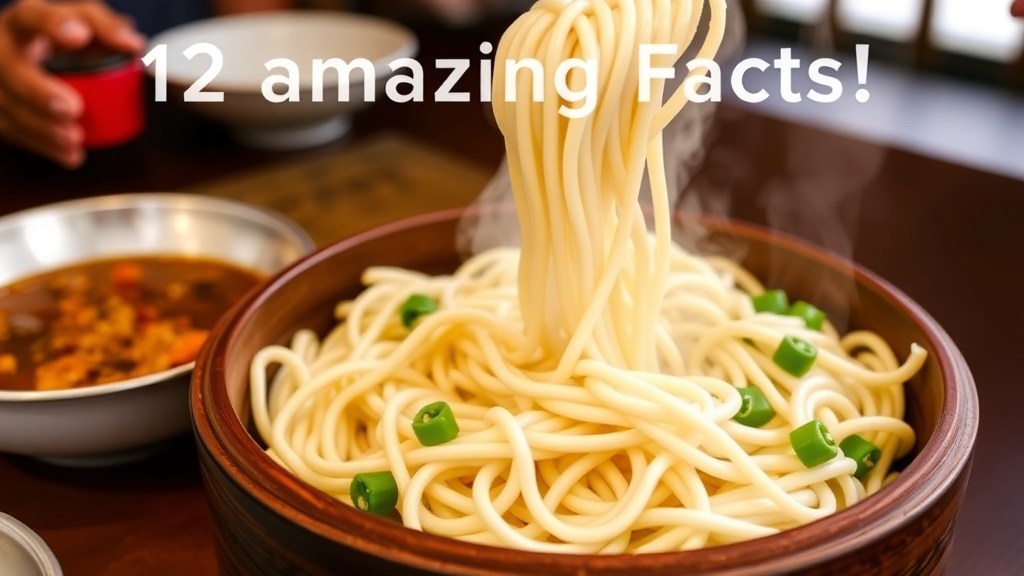

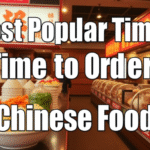
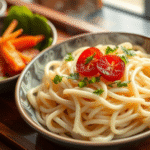
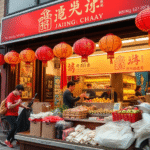
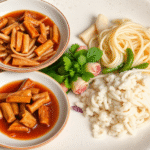
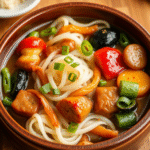
Leave a Reply